Abstract
We will provide an overview of melons, which play an important role in fruit vegetables in Japanese agriculture, based on data from 2022. The national harvest was 142kt, suggesting stable production. In addition, the cultivated area is 5.79 kha, which indicates that production is carried out on a relatively small area. Looking at shipping volumes, Ibaraki boasts the highest production volume at 31.7kt, with production volumes varying by region. This is thought to be due to differences in climatic conditions and cultivation techniques. Overall, melon production appears to be stable, with uniform demand across the country, although regional variations in characteristics can be seen.
Melon harvest yield (main data).
We look at data on Japan’s melon harvest from 1982 to 2022. At its peak in 1990, the nation achieved a record harvest of 421kt, but since then it has shown a declining trend. Current harvest yields are only about 33.8% of their peak yield. The decline is likely due to changes in agricultural policies, fluctuations in market demand, and the effects of climate change. On the other hand, there has been a shift towards higher added value and quality-focused production of melons, which may be improving profitability even though production volume is declining. Moreover, in recent years, demand for regional brands and high-quality melons has increased, and producers are focusing on improving quality. Overall, melon harvest volumes have been declining since their peak, but thanks to the efforts of producers, quality and added value are improving.
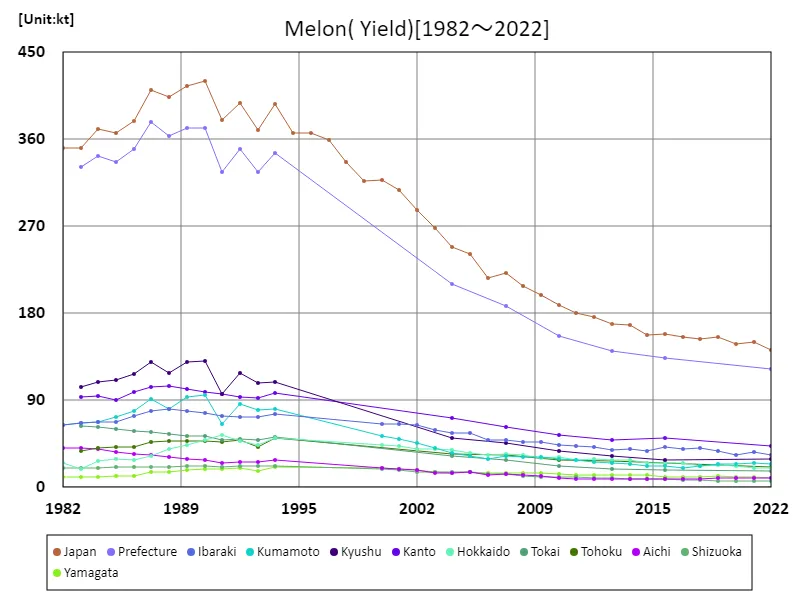

The maximum is 421kt[1990] of Japan, and the current value is about 33.8%
Melon harvest volume (by prefecture).
We will provide an overview of fruit vegetable yields in Japanese agriculture based on data from 2022. The highest overall harvest was in Ibaraki at 33.7kt, the highest ever recorded. This trend suggests that Ibaraki occupies a central position in the production of fruit vegetables. One reason for this is that Ibaraki has fertile soil and suitable climatic conditions, making it ideal for cultivating fruit and vegetables. Meanwhile, other regions are also seeing an increase in yields. This is thought to be due to improvements in agricultural technology and the efforts of producers. In addition, because the climate and soil conditions vary from region to region, each region produces unique fruits and vegetables. Overall, the fruit and vegetable harvest in 2022 reached an all-time high, with production booming in various areas, particularly in Ibaraki.
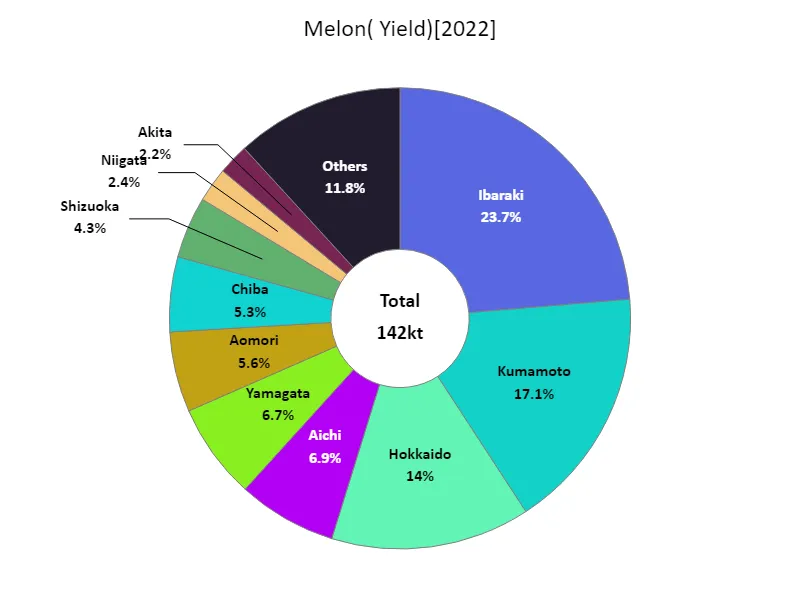

The maximum is 33.7kt of Ibaraki, the average is 3.09kt, and the total is 142kt
Melon cultivation area (main data).
This article provides an overview of melon cultivation area in Japanese agriculture based on data from 1982 to 2022. At its peak in 1990, the largest cultivated area in the country was recorded at 18.1 kha, but since then it has been on a downward trend. The current area under cultivation is down to about 32% of its peak. The decline is thought to be due to changes in agricultural structure, fluctuations in demand, and economic challenges faced by producers. Additionally, in recent years, the conversion to other crops and the reduction in farmland due to urbanization may also be contributing factors. On the other hand, there has been a shift towards high added value and quality-oriented production, and despite the downward trend, efforts to improve quality continue. It should also be taken into account that the reduction in cultivated area tends to vary from region to region, as the growing environment and demand for melons differ from region to region. Overall, the area planted to melons has been declining since its peak, due in part to structural changes in agriculture and fluctuations in demand.
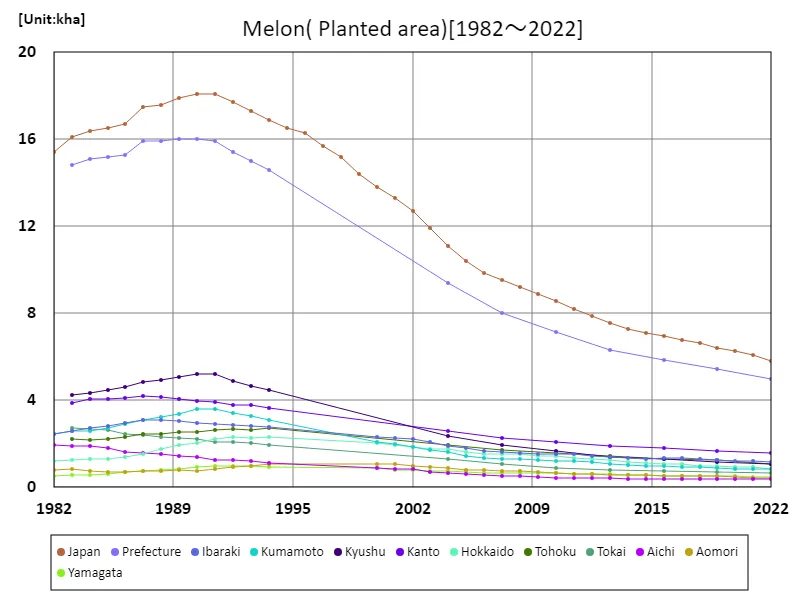

The maximum is 18.1kha[1990] of Japan, and the current value is about 32%
Melon cultivation area (by prefecture).
We will provide an overview of the area of land used to cultivate fruit vegetables in Japanese agriculture based on data from 2022. The largest overall cultivated area was 1.17kha in Ibaraki, which is the highest ever recorded. One reason for this is that Ibaraki has fertile soil and suitable climatic conditions, making it ideal for cultivating fruit and vegetables. It appears that fruit vegetable cultivation is thriving, especially in Ibaraki. On the other hand, there is also a trend for the area under cultivation to increase in other regions. This is thought to be due to improvements in agricultural technology and the efforts of producers. In addition, because the climate and soil conditions vary from region to region, each region cultivates unique fruits and vegetables. Overall, the area planted to fruit vegetables in 2022 reached an all-time high, and it can be said that production is particularly active in various areas, particularly Ibaraki.
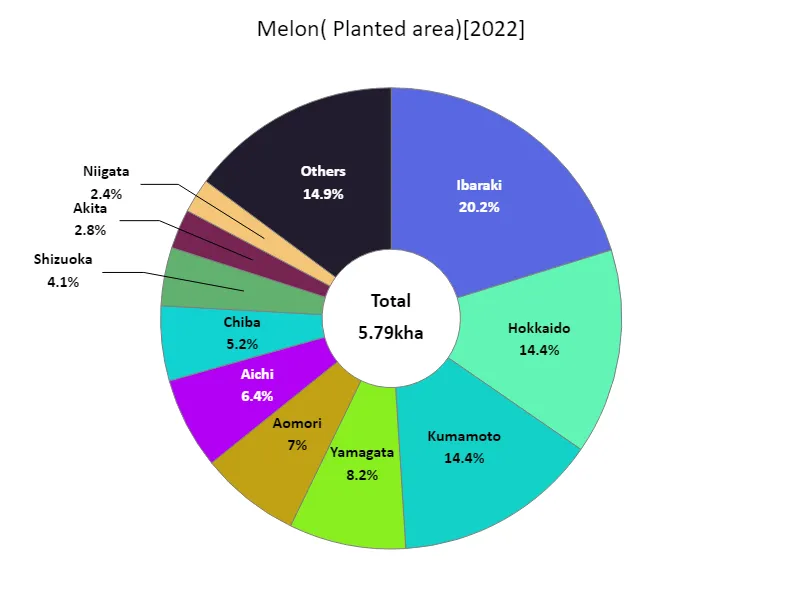

The maximum is 1.17kha of Ibaraki, the average is 126ha, and the total is 5.79kha
Melon shipment volume.
We will provide an overview of melon shipping volumes in Japanese agriculture based on data from 2022. The highest overall shipping volume was in Ibaraki at 31.7kt, with an average of 2.84kt and a total of 131kt. The fact that Ibaraki recorded the largest shipping volume suggests that melon production is particularly thriving in this region. One reason for this is that Ibaraki’s fertile soil and suitable climatic conditions are ideal for growing melons. On the other hand, shipping volumes have been secured in other regions as well, and melons are produced throughout Japan. The average shipment figure of 2.84kt suggests generally stable production. Additionally, the total shipping volume of 131kt indicates that melons are an important fruit vegetable in Japanese agriculture. Overall, melon shipments in 2022 will be stable across Japan, particularly in Ibaraki, with production being based on regional characteristics and demand.
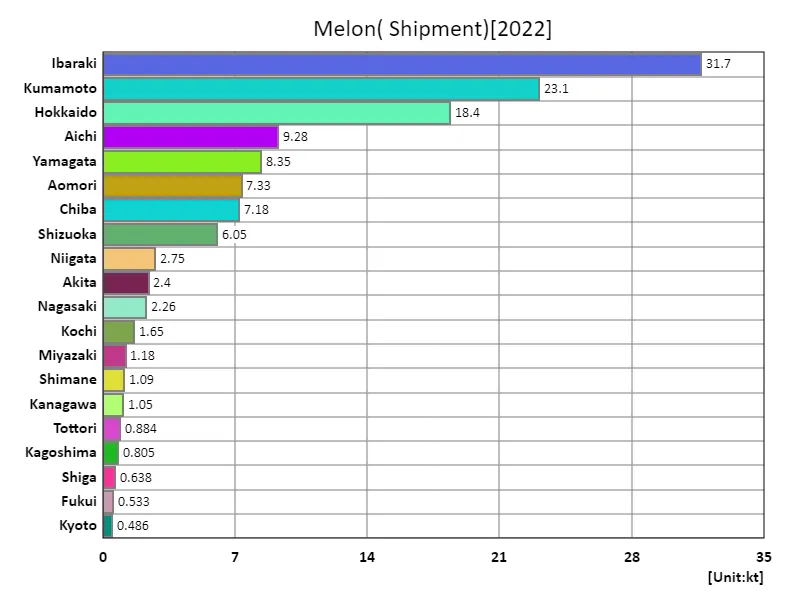

The maximum is 31.7kt of Ibaraki, the average is 2.84kt, and the total is 131kt
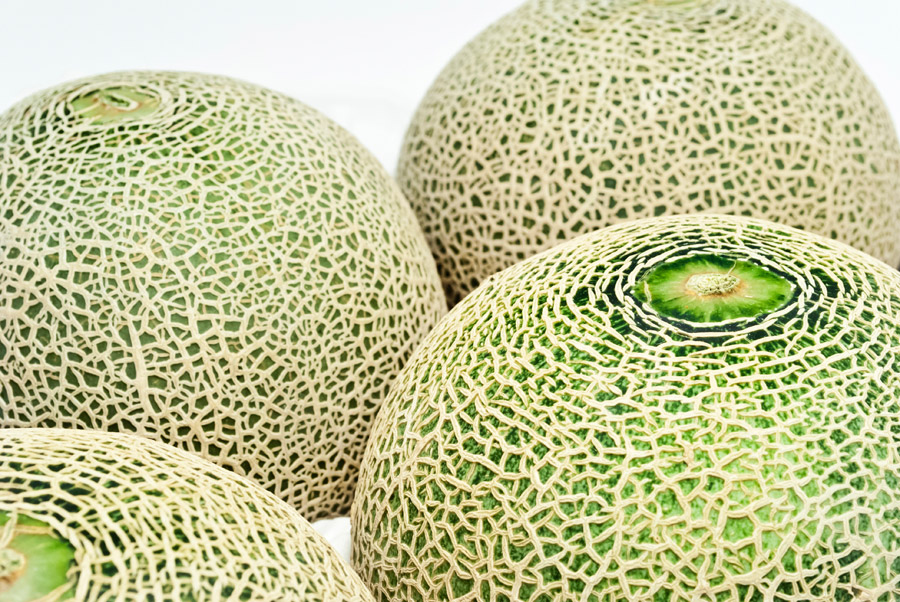


Comments